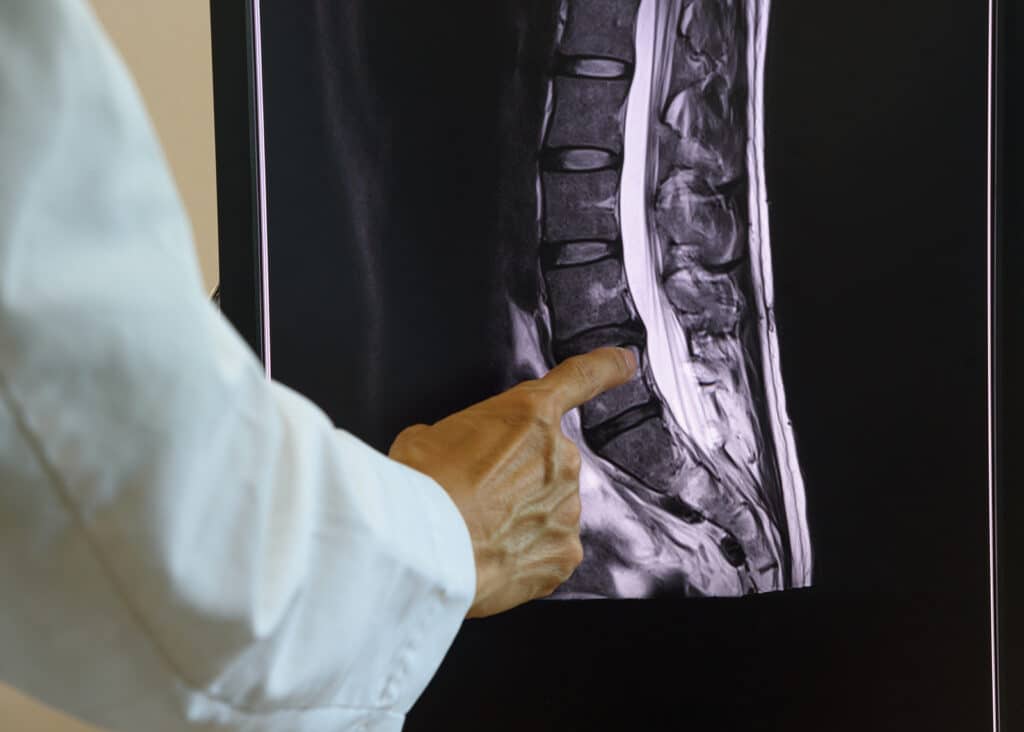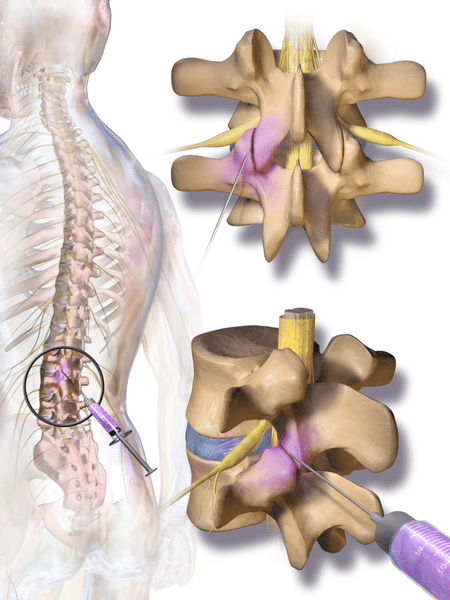
Part 2 of our Disc Injury series focusing on the symptoms, how to obtain a diagnosis, and treatment options.
In Disc Injuries (Part 1), we reviewed various disc facts: What it is, what kind of injuries there are, who is at risk, and how discs can be injured. To review the answers: Discs are cushions between almost all of your vertebrae; discs can bulge, tear in the outer layers, or be herniated; there are a variety of groups at risk for discs (read our first blog on disc injury to check the list), and they can be injured because of repetition, increasing age, and degeneration and/or sudden traumatic movement, like whiplash.
Disc injuries show up as a variety of symptoms, and none should be ignored. The sooner you identify your symptoms, the closer you are to feeling better. Typically, you might expect pain and muscle spasms in the area of injury. Additionally, there can be sharp, burning, or shooting pain which is called radiating pain. Most people think of sciatica when they think of radiating pain. If the injured disc is in the neck (cervical spine) the radiating pain will often be down the arm and if the injured disc is in the low back (lumbar spine) the radiating pain will often be down the legs. In some cases, numbness or tingling can occur because of nerve irritation or compression (similar to the feeling of your fingers or arm falling asleep). In severe cases, patients may experience limb weakness. In even more rare and severe cases, the patient may have bowel or bladder difficulties.

If you’ve been to your chiropractor and learned you have a disc injury, then you may already know the good news: most disc injuries heal without surgery! Your treatment will depend on your symptoms, but there are options for treating your disc injury (and how they help):
Chiropractic adjustments can provide increased motion to your spinal segments, reduce your pain, and ease your muscle tension and spasms. In the early stages of symptomatic disc injury when pain and muscle spasms are more likely, gentle chiropractic care, like instrument adjustments may be better tolerated.
Anti-inflammatory over-the-counter medications such as Advil and Aleve are helpful in everyday pain management. Prescription anti-inflammatory medications like Naproxen or muscle relaxers can also be helpful. Sometimes pain medication is also necessary.
Wearing a lumbar brace is helpful for the early stages of a disc injury and muscle spasms. A lumbar brace decompresses the spine and helps support the muscles. Oftentimes lumbar braces are recommended for short-term use because prolonged use can decondition your muscles. Some disc injuries require a custom-made corset that a spinal surgeon will prescribe for you if needed.
Bed rest has been shown to slow the healing time for disc injuries, but avoiding aggravating activities is also important to allow your body to heal. Your doctor will often give lifting restrictions and daily activity modifications. For example, if you are an avid runner, your medical provider may recommend walking or swimming to reduce impact. Switch to low-impact versions of your favorite activities–as long as they’re approved by your doc.
Support your injury area by incorporating core stability and postural exercises, while improving your flexibility and regaining strength and motion. Your chiropractor can help you learn new exercises that will target the areas that need the most help and you may also be referred to a physical therapist for structured instruction.
A tense body is one that is difficult to heal. With acupuncture and massage, pain is managed and/or reduced and muscle tension is lessened.
Gravity takes a toll on us all, especially our spine. Spinal decompression is a way for your body to get a break by relieving pressure and promoting healing.

Corticosteroid injections are done to help reduce pain and return to normal activities by flushing away the proteins that cause inflammation. These injections are typically performed by physicians like physiatrists, neurologists, orthopedic surgeons, and anesthesiologists. The corticosteroid injections do not make the herniated disc smaller, but they can help with the symptoms. The injections may be helpful for weeks or months.
Besides corticosteroid injections, there are other options like plasma-rich protein (PRP) and stem cell therapy. These types of injections are considered regenerative therapy because they work by kickstarting your healing or regenerative process by condensing the body’s own regenerative cells into the affected areas.
Surgery may be necessary for severe cases and for those that continue to have symptoms despite conservative care (chiropractic, physical therapy, etc.). Depending on the severity, patients may undergo a discectomy (removal of the portion of the disc that is protruding), a laminectomy (removal of the bone), or a full disc replacement using two metal plates and a synthetic disc between. In most cases, surgery is the last resort, but it may be necessary.
Early intervention can reduce the likelihood of continued pain and other symptoms and help reduce the likelihood of more chronic complaints. The good news is that most cases – about 90% – will heal within 4-6 months without surgery!
Schedule online at www.elementchirocare.com or call (541) 316-6010 to start your treatment with an experienced chiropractor at Element Chiropractic.
Copyright @2025 Element Chiropractic — 875 SW Rimrock Way Suite 103, Redmond, OR 97756